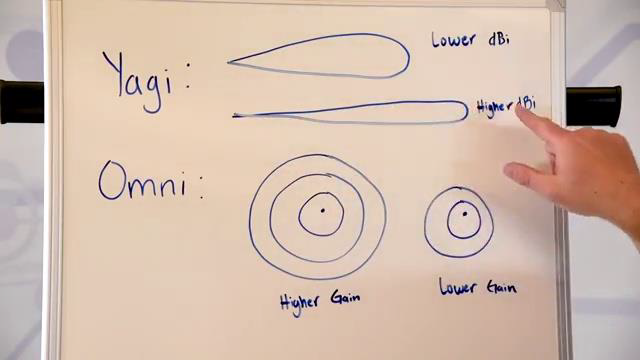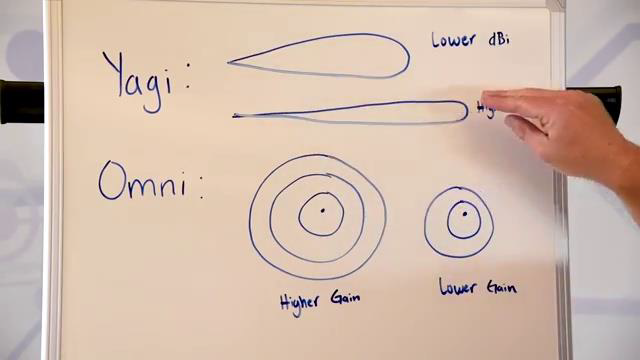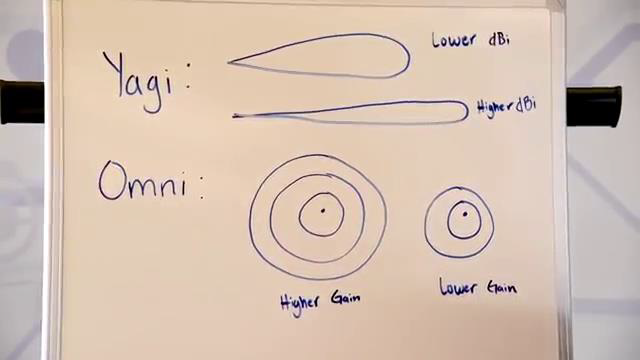Omni vs Yagi Antennas: What are the differences and when to use them
Omni Antenna
- Are primarily used when you need to communicate with multiple devices in all different directions
- They have a reduced range in comparison to Yagi Antennas
- Can talk to multiple different radios at the same time
- Commonly used in scenarios where it is acting as the "Access Point" in the radio network
Yagi Antenna
- Used to communicate in one direction (unidirectional)
- They have a longer range in comparison to Omni Antennas
- Typically only communicate with one other radio, however can talk to multiple
- More common to see used in remote locations
Usage Scenario
It is common to see both Omni and Yagi antennas being used in the same radio communication system. In most cases, the Omni antenna will be located in the main "Access Point" of the network, as well as any other locations in which it needs to communicate with multiple sites in varying directions. Yagi antennas will most commonly be used in remote sites that are at greater distances and only communicating with one other site.
Transcript:
[0m:4s] Hi I'm Josh Bloom, welcome to another video in the RSP Supply education series. Today we're going to be talking about the difference between Omni and Yagi antennas. When trying to communicate over long distance is often impractical and very expensive to run communication cables. In these cases, we use industrial communication radios. These radios require the use of an industrial antenna to transmit and receive data from one location to another.
[0m:30s] The most common type of antennas used are Yagi or Omni antennas. Today we'll talk about the differences between the two, and what applications you might use one versus the other, and the advantages and disadvantages of each.
[0m:42s] First, let's talk about Yagi antennas also known as directional or uni-directional antennas. Directional antennas can transmit and receive data coming from one specific direction. So, Yagi antennas have the ability to communicate much greater distances, however, the antenna pattern is more narrow, which is why it is so important that our aiming is correct. Aiming the antenna correctly is very important for optimal reception.
[1m:9s] Knowing the actual antenna pattern ensures that we aim the antenna properly.
[1m:14s] Now let's talk about Omni antennas. The difference between a Yagi and Omni antenna is that an Omni antenna has a 360 degree antenna pattern which allows it to send and receive data from all different directions. Unlike the Yagi antenna, the Omni antenna does not need to be pointed in any specific direction when being installed. So, some advantages again are going to be that the Omni antenna can send and receive data from all different locations in a 360 degree pattern.
[1m:41s] One disadvantage when we use one Omni antenna to communicate with another Omni antenna, it is limited by range in comparison to the Yagi antenna.
[1m:50s] Now that we've talked about the different characteristics of both a Yagi and Omni antenna let's talk about the selection process and some things we might want to consider when picking an antenna. The first thing we want to think about
[2m:1s] is frequency. Each antenna is designed to operate within a specific frequency range. So, if we have a radio network operating on a 900 megahertz frequency, we want to make sure that the antenna we select operates under 900 megahertz. Another thing we might want to consider is the DB rating of our antenna. What DB effect is the signal strength of our given antenna. Let me show you. In regards to a Yagi antenna, the higher DB rating we have


[2m:29s] increases the distance in which it can communicate. It does, however,


[2m:34s] narrow our antenna pattern.
[2m:36s] The lower DBI rating with Yagi antenna reduces our communication distance but increases our antenna pattern. In regards to Omni and the DB rating, or gain,


[2m:47s] the higher DB rating we have increases the signal strength, therefore increasing the area in which it can communicate.

[2m:54s] We have a lower DB rating on an Omni antenna reduces our signal strength, therefore reducing the area in which it can communicate. The last thing to consider when selecting an antenna is which antenna do I use a Yagi or an Omni? Let's look at practical industrial application that might help us determine which type of antenna we should use. Let's assume we have a city that wants to monitor its water system. Let's also assume that in the city, we have several remote sites that are located a certain distance from the city office. Let's start with the city office. Knowing that the city office wants to communicate with all the remote sites, we would want to use either a master station radio or an access point radio, and we would also want to use an Omni antenna in that it can communicate in 360 degrees and send and receive data to all the different remote sites.

[3m:45s] In regards to the remote sites, where they are located a farther distance from the city office, it would make sense for us to use a Yagi antenna due to the fact that they can communicate at a greater distance. Also, they only need to communicate in one direction in this case to the city office. So in this city's case, at each remote site we would use a Yagi antenna to communicate with the city office. The city office would use an Omni antenna so that it can send and receive data from all the different remote sites. For a full line of Yagi and Omni antennas or thousands of other products, please go to our website. For more information or other educational videos, go to RSPSupply.com, the Internet's top source for industrial hardware. Also, don't forget: like and subscribe.


